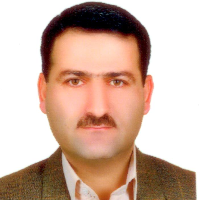Investigation of soil infiltration trend changes through direct method, case study: Paskuh floodwater spreading
Author(s):
Abstract:
Entrance of high volume of floodwater containing huge amount of suspended sediments into the floodwater spreading networks which deposits sediments, as well as infiltration of soluble materials and fine grained, gradually changes the infiltration rate of soils. The aims of this project is to study the quantity and the process of changes made in the soil of Saravan floodwater spreading station. This research has tried to use direct method of infiltration rate measurement, using double ring infiltrometer in two separate time periods of one year each, and to compare it to the experimental area. In order to specify overall situation of infiltration rates in terms of increase or decrease in second period of measurement in comparison to the first one, and as far as data were not distributed normally, Wilcoxon signed-rank test was used. The results showed no significant difference between two separate measurement periods due to few number of floodwater occurrences (three times) in addition to short time interval of one year between the two measurement periods. To determine changing rate of infiltration between strips and between the strips and the experimental field, as far as abnormal distribution of data in this arrangement were concerned, Kruskal-Wallis test was used. Results indicated that the three strips of flood spreading area have no significant difference (at five percent probability level) in two periods of measurement, but the strip related to experimental area has significant difference with other three strips and in both measurement periods. In other words, infiltration rates of all strips under floodwater spreading have been decreased in relation to the experimental area. Moreover, the results were explanatory that only one of the rectangular in both measurement periods had significant difference with experimental rectangular (at five percent probability level) and all the other rectangular have had no significant differences with each other and in comparison to the experimental one, in none of periods of measurement. Main reason of this difference is also related to the thicker sediments deposits in rectangular location, compared to other blocks. Also, infiltration rate decreased by 55.94 percent in flood spreading area compared to experimental area during one-year timeframe and 3.23 percent of reduction.
Keywords:
Aquifer , Double , Rings , Kruskal , Wallis test , Sediment , Wilcoxon test
Language:
Persian
Published:
Journal of Watershed Engineering and Management, Volume:5 Issue: 1, 2013
Pages:
41 to 50
magiran.com/p1165359
دانلود و مطالعه متن این مقاله با یکی از روشهای زیر امکان پذیر است:
اشتراک شخصی
با عضویت و پرداخت آنلاین حق اشتراک یکساله به مبلغ 1,390,000ريال میتوانید 70 عنوان مطلب دانلود کنید!
اشتراک سازمانی
به کتابخانه دانشگاه یا محل کار خود پیشنهاد کنید تا اشتراک سازمانی این پایگاه را برای دسترسی نامحدود همه کاربران به متن مطالب تهیه نمایند!
توجه!
- حق عضویت دریافتی صرف حمایت از نشریات عضو و نگهداری، تکمیل و توسعه مگیران میشود.
- پرداخت حق اشتراک و دانلود مقالات اجازه بازنشر آن در سایر رسانههای چاپی و دیجیتال را به کاربر نمیدهد.
In order to view content subscription is required
Personal subscription
Subscribe magiran.com for 70 € euros via PayPal and download 70 articles during a year.
Organization subscription
Please contact us to subscribe your university or library for unlimited access!


